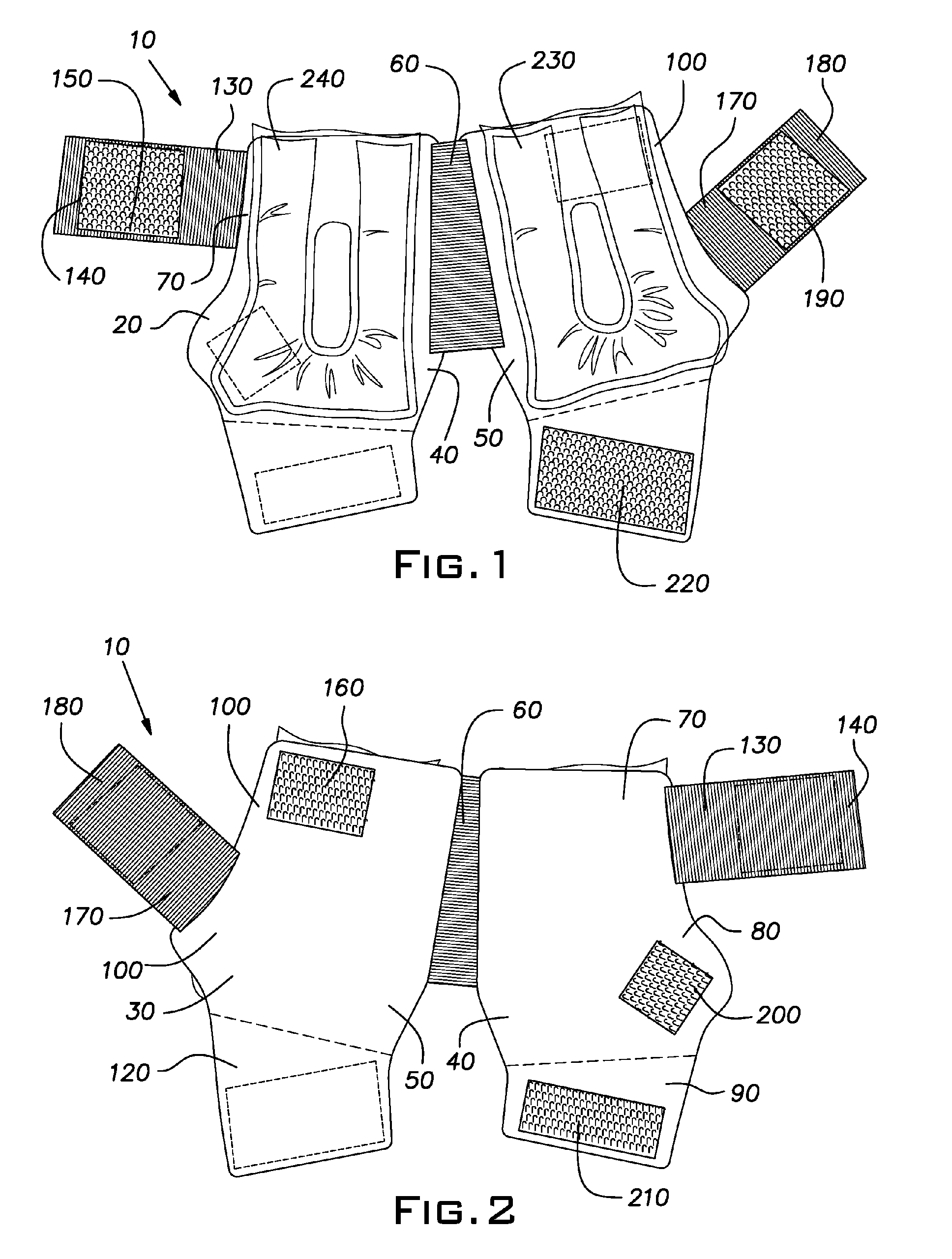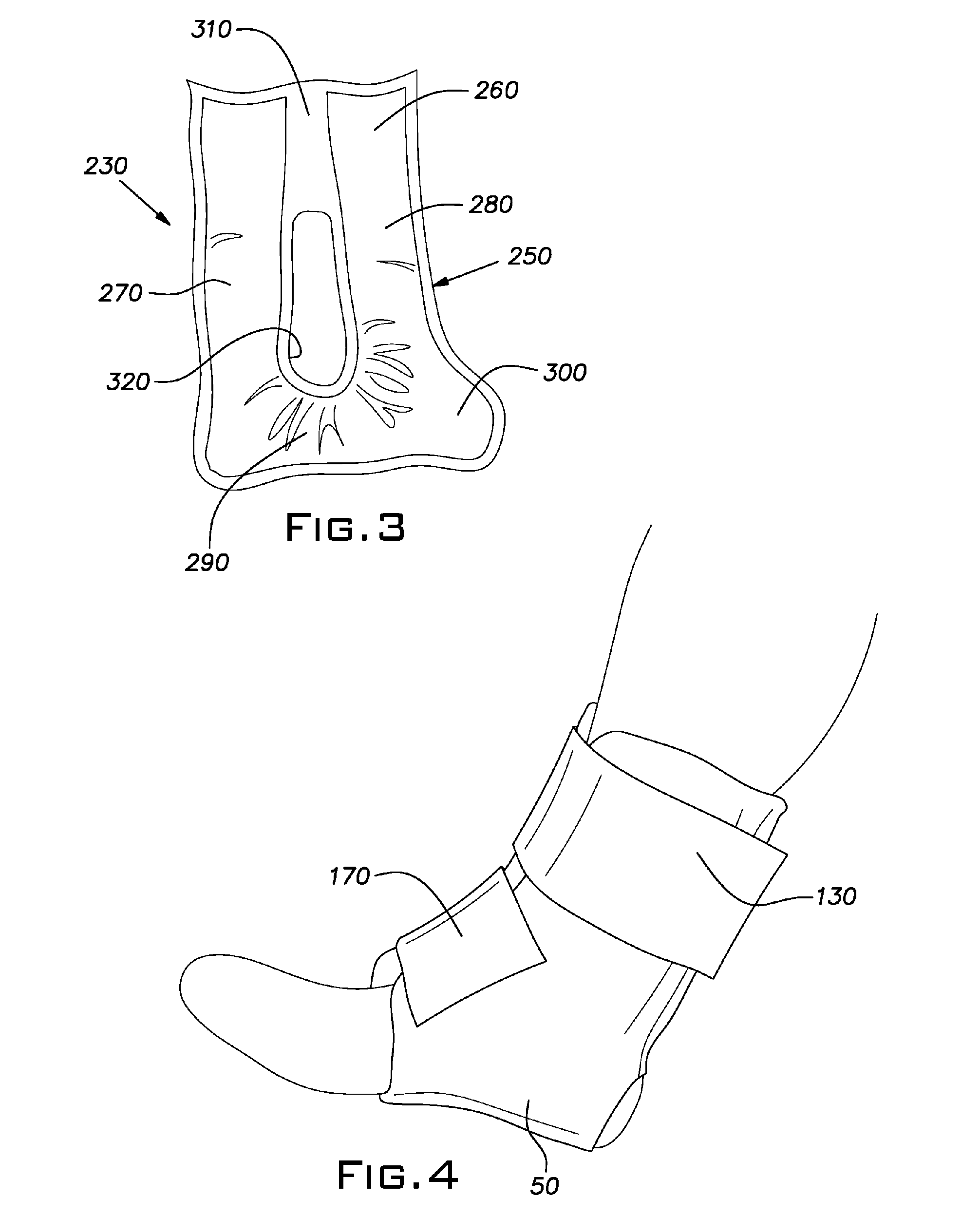Device for administering cold therapy to ankles
- Summary
- Abstract
- Description
- Claims
- Application Information
AI Technical Summary
Benefits of technology
Problems solved by technology
Method used
Image
Examples
Embodiment Construction
[0018]FIGS. 1 and 2 show the inner side 20 and the outer side 30, respectively, of the presently most preferred embodiment of a device 10 for providing cold therapy to a human ankle according to the invention. The term “inner side”, as used in this context, refers to the side of the device 10 that is positioned adjacent to a human's ankle when the device 10 is secured thereto, whereas the term “outer side” refers to the side of the device 10 that is exposed when the device 10 is secured to a human ankle.
[0019] The device 10 comprises a first flexible sheet member 40 and an opposing second flexible sheet member 50. The first and second flexible sheet members 40, 50 are preferably formed of one or more layers of a fabric material such as woven nylon or canvas, which can be stitched together to form a flexible sheet. In a preferred embodiment of the invention, the first and second flexible sheet members 40, 50 are formed of two layers of nylon sandwiching a thin closed-cell foam sheet...
PUM
 Login to View More
Login to View More Abstract
Description
Claims
Application Information
 Login to View More
Login to View More - R&D
- Intellectual Property
- Life Sciences
- Materials
- Tech Scout
- Unparalleled Data Quality
- Higher Quality Content
- 60% Fewer Hallucinations
Browse by: Latest US Patents, China's latest patents, Technical Efficacy Thesaurus, Application Domain, Technology Topic, Popular Technical Reports.
© 2025 PatSnap. All rights reserved.Legal|Privacy policy|Modern Slavery Act Transparency Statement|Sitemap|About US| Contact US: help@patsnap.com



